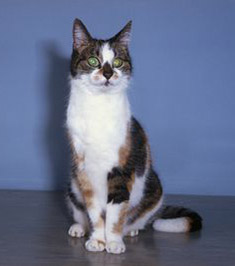Signs and Owner Observations in Hyperthyroid Cats
Hyperthyroidism is a progressive disease with a slow onset, becoming more clinically obvious with time. Many cats show clinical signs for 6-12 months prior to being presented to their veterinarian. Cat owners may think early signs are nothing more than signs of ‘good health’, i.e. an increased appetite and high levels of activity, or the ‘normal signs’ of aging associated with the gradual loss of coat and body condition.
Thyroid hormones have a wide variety of actions in many different body systems; many organs are involved and a variety of clinical signs can be seen. Clinical signs are also dependent on the duration of the condition and the presence of concurrent disease.
| Frequency of signs at presentation (in decreasing order of prevalence) |
|---|
| Weight loss |
| Polyphagia |
| Polyuria/Polydipsia |
| Hyperactivity |
| Gastrointestinal signs (vomiting and/or diarrhea) |
| Poor coat quality |
| Respiratory signs |
| Decreased appetite |
| Lethargy |
| Weakness |

Signs of hyperthyroidism usually include poor body condition. Nervousness or increased activity is also quite common.
Photograph: Courtesy of Dr Hans Kooistra, Utrecht University

